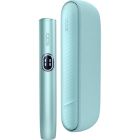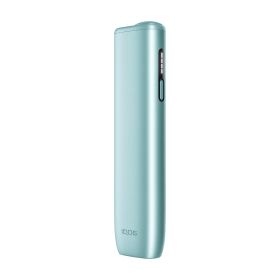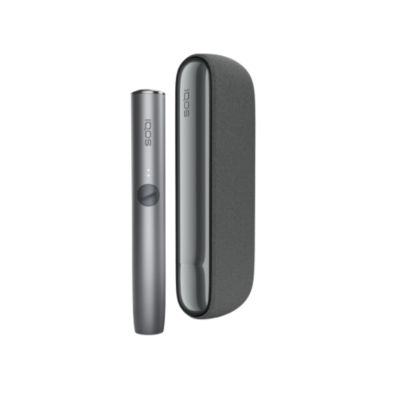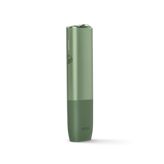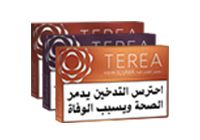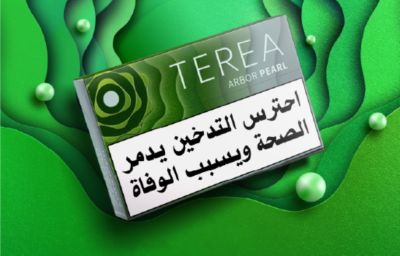26 June 2025
Comparing Nicotine Levels in Cigarettes, IQOS, and Vapes in Egypt
For adult users of cigarettes, heated tobacco, and vapes, understanding nicotine levels is more than just knowing numbers—it's about making informed choices. This includes recognising the content in tobacco products and how it affects both nicotine delivery and user experience. Whether you're considering combusted cigarettes, or Electronic Nicotine Delivery Systems (ENDS), it's important to understand how nicotine content varies across different products.
This guide provides a detailed comparison of nicotine in tobacco products, including cigarettes, vapes, hookah, freebase nicotine, nicotine pouches, and smokeless tobacco products.
What is Nicotine?
Nicotine is a naturally occurring stimulant found in the tobacco plant. It is used in a wide range of products, including cigarettes, vapes, and heated tobacco devices. The nicotine delivery depends on the format of the product, which is explored in more detail in the following section. Keep reading to learn how different formats affect nicotine absorption.
What Is the Difference Between Nicotine Contents and Nicotine Delivery?
Nicotine content describes the amount of nicotine in a product. It is usually measured in milligrams (mg) and reflects the concentration found in items such as cigarettes, e-liquids, or smoke-free alternatives like nicotine pouches.
● Nicotine in Tobacco Products: Nicotine is a naturally occurring substance found in the tobacco plant. It is present in various tobacco products such as cigarettes, cigars, and smokeless tobacco products.
● Nicotine Strength in E-Liquids: For e-liquids used in smoke-free alternatives, nicotine strength is typically shown as a concentration—measured in milligrams per millilitre (mg/ml)—reflecting the amount of nicotine contained in each millilitre of liquid.
Nicotine Delivery
Nicotine delivery refers to how nicotine is introduced into the body—commonly through inhalation or absorption via the lungs, mouth, or skin. Different delivery methods result in varying rates of nicotine absorption and effects.
● Traditional tobacco products (cigarettes, cigars, smokeless tobacco): When inhaled, nicotine is rapidly absorbed through the lungs and reaches the brain in about 10–20 seconds, delivering approximately 1–1.5 mg of total nicotine per cigarette.
● Electronic Nicotine Delivery Systems (ENDS), such as e-cigarettes or vapes: These devices heat a liquid containing nicotine to create an inhalable aerosol. Absorption speed varies by device generation and technique of adult users.
Nicotine Levels in IQOS, TEREA, and HEETS
IQOS is a heated tobacco product that heats specially designed sticks—such as HEETS and TEREA—without burning them. This process generates a nicotine-containing aerosol with reduced levels of chemicals in heated tobacco products compared to combusted tobacco products.
● HEETS Nicotine Level: Depending on usage patterns, around 0.5 to 0.7 mg of total nicotine is delivered per stick.
● TEREA tobacco sticks: Each stick delivers approximately 0.5 mg of total nicotine, consistent across all TEREA variants designed for IQOS ILUMA devices.
Explore what HEETS are and how they deliver nicotine. Also, compare the experiences: IQOS vs e-cigarettes.
How Much Nicotine Is in a Cigarette?
A traditional cigarette contains between 6 and 12 mg of total nicotine, depending on the brand and blend. However, actual nicotine delivery to the bloodstream is much lower—about 1 mg per cigarette on average. On average, only about 1 mg of nicotine is actually delivered to the bloodstream per cigarette due to factors such as inhalation depth, and puff frequency.
The maximum nicotine content level found in cigarettes can also be impacted by filter design factors. These include the type of filter used, how the tobacco burns (combustion temperature), and the presence of tobacco-specific nitrosamines—types of chemical in tobacco products that are formed during the curing and combustion processes and may contribute to overall exposure.
Explore our guide to cigarette prices in Egypt if you're comparing costs or considering a switch.
Secondhand Smoke and the Effects of Nicotine Contents
One of the most concerning issues related to traditional smoking is secondhand smoke exposure. When tobacco is burned, the smoke released into the environment can affect both smokers and those nearby.
Prolonged exposure to secondhand tobacco smoke, especially in enclosed or poorly ventilated areas, can lead to a noticeable build-up of smoke in the air.
When smoking takes place in shared spaces such as homes or cars, people nearby—like children, family members, or guests—may also be exposed to the smoke.
Nicotine Strengths in Vape E-Liquids
E-liquids used in smoke-free alternatives come in a range of nicotine levels and strengths. These are typically listed in milligrams per millilitre (mg/ml) or percentages (%) to help adult user know total nicotine strengths, such as:
● 0 mg / 0%
● 3 mg / 0.3%
● 5 mg / 0.5%
● 6 mg / 0.6%
● 10 mg / 1%
● 11 mg / 1.1%
● 12 mg / 1.2%
● 18 mg / 1.8%
● 20 mg / 2%
Choosing a nicotine strength is a personal decision and may depend on how often you used to experience it . Some adult users prefer starting with a higher strength when transitioning from cigarettes and gradually adjusting over time.
Discover the most common questions on nic salts and e-liquids.
How Much Nicotine Is in Hookah Tobacco?
Hookah tobacco—also known as shisha or muʽassel—is made from tobacco leaves mixed with flavourings and humectants, so its nicotine content can vary by tobacco blend. On average, dry hookah tobacco contains around 0.26% nicotine by weight —that’s approximately 2.6 mg per gram.
A standard 20 g bowl of hookah tobacco typically contains 36 to 126 mg of nicotine, with many brands averaging 67 mg per session. However, not all of this nicotine is absorbed by adult users during a session.
Despite this, a single hookah session still delivers 1.7 to 2.5 times the nicotine found in a single cigarette, largely due to longer session durations and deeper inhalation patterns.
Thus, while the tobacco itself may look milder in nicotine concentration, the actual exposure can be significantly higher than many adult users expect.
Freebase Nicotine
Freebase nicotine is one of the most commonly used forms of nicotine in traditional e-liquids and has been around since the early days of vaping. Chemically, freebase nicotine is a pure form of nicotine that has been adjusted to a more alkaline state, allowing it to be vaporised at lower temperatures.
E-liquids containing freebase nicotine are available in a wide range of nicotine levels, typically from 3 mg/ml to 18 mg/ml, with some products going as high as 20 mg/ml depending on local regulations.
The nicotine concentration in freebase nicotine products affects how it is absorbed in the body—lower strengths are often used for direct-to-lung (DTL) vaping, while higher strengths are suited to mouth-to-lung (MTL) devices.
Many adult smokers who are transitioning to non-cigarette tobacco products explore freebase nicotine products to customise their nicotine intake.
Nicotine Levels in Combusted and Combustible Tobacco Products
While often used interchangeably, combusted and combustible tobacco products have slightly different meanings. Combusted tobacco products involve direct combustion, producing smoke that delivers nicotine and other chemicals to the adult user.
Here are some examples of combusted tobacco products:
● Traditional cigarettes
● Cigars
● Pipe tobacco
● Roll-your-own tobacco
On the other hand, combustible tobacco products is a broader term that refers to any tobacco product designed to be burned, whether or not combustion happens in every instance.
Examples of combustible tobacco products:
● Hookah tobacco
● Herbal tobacco blends
In both cases, the process of burning tobacco results in rapid nicotine delivery and the production of harmful chemicals associated with smoke exposure.
Nicotine levels in both types of tobacco products can vary significantly depending on the type of tobacco products, brand, and smoking behaviour.
However, it's not just the nicotine content that matters, but also the way it's delivered. Combustion increases the speed and creates a more intense nicotine experience for adult users.
Heated Tobacco Products As an Alternative to Smoking
Heated tobacco products are smoke-free alternatives designed for adult smokers who would otherwise continue using cigarettes. Unlike traditional cigarettes, which burn tobacco at high temperatures and produce smoke, heated tobacco devices warm specially designed sticks to release a nicotine-containing aerosol—without combustion.
This heating method helps reduce the formation of harmful chemicals commonly associated with cigarette smoke. While not risk-free, heated tobacco products may present a better choice for adults seeking an alternative to continued smoking.
Understand what happens when you switch to heated tobacco or vape.
Explore our available bundle options and learn more about IQOS ILUMA bundles for heated tobacco use. To understand where IQOS fits in the broader category of products, read how IQOS compares to vapes.
IQOS is not risk-free and provides nicotine, which is addictive. Only for use by adults.


